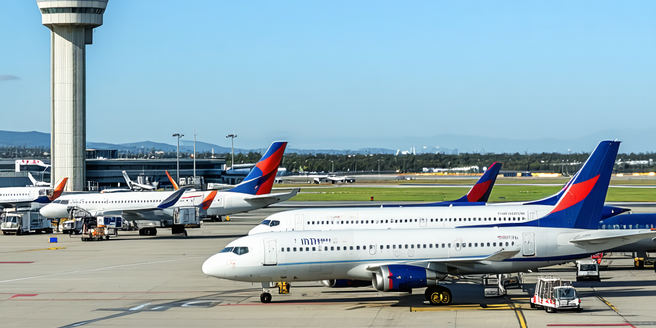
Understanding Wind Alerts in Aviation
Wind alerts are crucial in aviation, as they inform pilots and air traffic controllers about current and forecasted wind conditions. These alerts typically include information about wind speed, direction, and any significant changes anticipated. Understanding wind patterns is vital for ensuring safe takeoffs and landings. Pilots use wind alerts to adjust their flight paths and speeds accordingly. Moreover, airlines schedule flights considering these alerts, minimizing delays and optimizing fuel efficiency. Modern weather forecasting relies on advanced radar and satellite technologies to provide accurate, timely wind alerts. As aviation continues to evolve with climate changes, integrating wind alerts in routine operations helps enhance safety. Comprehensive pilot training emphasizes the importance of interpreting these alerts. Therefore, understanding wind alerts is integral in maintaining aviation safety and efficiency in ever-changing weather conditions.
How Wind Affects Airport Operations
Wind significantly impacts airport operations, influencing both efficiency and safety. Strong winds can lead to delayed flights, diverted routes, or even groundings if conditions become too severe. Crosswinds pose specific challenges during takeoff and landing, necessitating precise adjustments by pilots and air traffic controllers. Airports are strategically designed with multiple runways to accommodate different wind directions, enhancing operational adaptability. Wind conditions also affect the scheduling and sequencing of flights, as airports attempt to maximize throughput during optimal conditions. Wind shear—a sudden change in wind speed or direction over short distances—requires particular focus as it poses severe risks during critical phases of flight. Additionally, ground operations like taxiing can be complicated by gusty conditions, further complicating logistics. Therefore, understanding and adapting to wind’s effects is essential for ensuring smooth and safe airport operations.
Technological Advances in Weather Monitoring
Technological advancements in weather monitoring have transformed how airports manage wind-related challenges. Radar systems have improved significantly, offering detailed, real-time insights into wind patterns and storm developments. Doppler radar technology, for instance, allows meteorologists to detect wind speeds and directions more accurately. Satellites provide comprehensive data on global weather systems, predicting changes with greater precision. Moreover, automated weather stations installed at airports continuously monitor atmospheric conditions, giving up-to-minute updates critical for pilot and controller decision-making. The integration of artificial intelligence in weather modeling has led to improved forecasting accuracy, enabling proactive measures to mitigate wind risks. These technological strides ensure enhanced safety, minimize delays, and improve the overall efficiency of airport operations. As technology continues to evolve, the ability to predict and respond to adverse weather conditions, including winds, significantly enhances aviation safety.
Designing Airport Infrastructure for Wind Resilience
Designing airport infrastructure to withstand strong winds involves strategic engineering and planning. Runway orientation is critical, often aligned with prevailing wind patterns to minimize crosswind risks during takeoff and landing. Additionally, installation of windbreaks, such as trees or barriers, can reduce wind speed and turbulence around the airport. Buildings and control towers are constructed to withstand high winds, incorporating materials and designs that enhance aerodynamic stability. Moreover, the implementation of advanced lighting and signage systems ensures their functionality despite inclement weather. Air traffic control systems incorporate redundancies, maintaining operational capacity during adverse wind conditions. By focusing on resilience in the airport design phase, these infrastructures can ensure continued safety and efficiency even amidst severe weather challenges. Airports worldwide continuously update their infrastructure, accounting for changing climate patterns and enhancing their ability to withstand unpredictable wind events.
Case Studies: Airports Adapting to Wind Challenges
Several airports globally have successfully adapted to wind-related challenges through innovative strategies. Kansai International Airport in Japan, for instance, has implemented an advanced wind monitoring system that provides real-time data to pilots and ground staff. This system has significantly reduced flight delays during storm seasons. Similarly, Amsterdam Schiphol Airport has invested in reorienting its runways to align with prevailing winds, improving safety during takeoffs and landings. In the United States, Denver International Airport is equipped with multiple runways designed to handle varying wind conditions, maintaining operational efficiency even during high winds. These airports also integrate technology, such as wind shear detection systems, enhancing responsiveness to sudden wind changes. These successful adaptations serve as models for other airports facing similar challenges, demonstrating the importance of strategic planning and infrastructure investment to manage and mitigate the impacts of strong winds.
